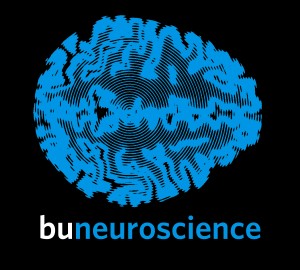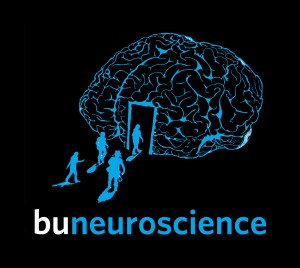By gg42
The Hard Problem of Consciousness
You’re lying on a sandy beach on a hot sunny afternoon, enjoying a few hours of much needed laziness. As you open your eyes and confront the vastness of the ocean in front of you, light of 600nm wavelength hits your retina, kindling an impossibly long cascade of events in your brain: a molecule called retinal changes shape, neurons fire action potentials down the optic nerve, arrive at the lateral geniculate nucleus deep in the brain causing more action potentials in primary visual cortex in the back of your head, and so on ad infinitum. At some point, the mechanical wonder of 100 billion neurons working together produces something special: your experience of the color blue. What’s special is not that you can discriminate that color from others; nor that you are aware of it and paying attention to it. It is not notable that you can tell us about it, or assign a name to it. It’s that you have a subjective, qualitative experience of the color; there is something it is like to experience the color blue. Some philosophers call these experiences qualia – meaning “what kind” – but it is not important what kind of experience you are having, just that you are having one at all. Modern science hypothesizes that subjective experience is a product of the brain, but has no explanation for it. More
Neither free nor completely determined
Free will is a hackneyed topic. Science seems to be telling us that free will doesn’t exist because behavior is governed by the brain and the brain operates on physical rules of cause and effect. There is no such thing as uncaused cause, which free will requires. For some people this is an unbearable notion; these folks hang on to their perceived volition as evidence that they are in fact free to do as they choose, without being constrained by their biology. Others swallow what science has espoused long ago; of these folks, some tend to be pessimistic, thinking that their lack of free will means that everything is pointless and that the best thing they can do for themselves is to blur the line between their behind and a comfortable couch, until scientists discover the new species Homo sofus. More
More Shirts…
Here are two more renditions of shirts for BU Neuroscience. Please VOTE!!

D.C. Somers

Devyn Buckley
New Class of Cognitive Enhancers to Transform Mankind
Scientists at the Bewundgen University in Germany discovered that a diet rich in petrolatum, a substance of hydrocarbons, can greatly improve performance on a wide variety of cognitive tasks.
The research, led by neuroscientist Dr. Hans Schweinstucken, followed three groups of human subjects for over a year. The first group was instructed to eat regularly, but to also consume 500 grams of petrolatum per day, in the morning after breakfast. The second group was given an energy-deficient supplement of sugar substitutes; and the third were not given anything at all. All groups were tested periodically on tasks of memory, abstract thinking, cognitive speed, and general agility. To their surprise, the researchers found that regular consumption of petrolatum improved subjects' recall, memory retrieval and abstract thinking while reducing overall agility, motivation and ability to make decisions. In contrast, the group eating sugar substitutes performed significantly worse over time on tests of memory and abstract thinking, with 50% of the subjects hitting an all-time low of 25% correct responses on recall (vs. their performance prior to the experiment).
Dr. Schweinstucken speculates that the first group's reduced motivation and agility may have something to do with their major weight gain, which by itself remains a mysterious side-effect. As for the mechanisms of action, Dr. Schweinstucken proposes that petrolatum acts via inhibitory GABAergic interneurons in neocortex, the brain part thought to be important in higher cognition, antagonizing GABA action and thereby reducing overall levels of inhibition in the brain. However, he warns that at higher doses than 500 grams per day, petrolatum may actually have a detrimental effect on cognition because it may saturate GABA receptors and the corresponding neurons, causing massive seizures; he is currently conducting experiments to test this hypothesis.
Meanwhile, for all you folks who have exams to study for, I recommend a trip to your local CVS, where petrolatum is sold over-the-counter as "Vaseline," or petroleum jelly.
Further reading:
Schweinstucken et al. Petrolatum improves cognitive performance in humans. J Psycho Chemo Physio Med. 2011, April 1.
I <3 Kim Kardashian
They can’t stop talking about her. “Look at how popular and successful she is!” “Look at how stupid and ditsy she is!” “What has she done to be so famous?” … Well, I don’t care if she’s smart or stupid, rich or poor. The only things I see when she’s on the screen are those voluptuous curves. Regardless of what you think of her, Kim Kardashian has what most men dream of. Since this is a nerds’ blog, we’re going to take the moment to examine why we men like those curves so much.
Men like women with large curves because these provide an adaptive advantage, increasing the likelihood of the propagation of genes. Wide hips are adaptive because they make child birthing easier (more successful); large breasts may provide more nutrition during nursing. The men who go for the curves are more likely to make successful offspring; those offspring incidentally share the same instinct for curves and eventually make more progeny; and the cycle continues.

Now, Kim Kardashian is what you call a supernormal stimulus. She has everything that normally elicits a positive response but exaggerated. “Supernormal stimulus,” by the way, is attributed to the famous ethologist Niko Timbergen, who found that substituting a mamma-seagull’s white beak with its one red spot for a stick with three red spots made the chicks way more excited for food. Many more such examples have been described in a variety of animals. More
Untangling the Wires
Here's a great video summary from Nature on the recent advances in the field of connectomics by researchers at the Max Planck Institute in Germany and Harvard University:
And the original research, here.
My previous post on Connectomics.
Middle World
A little self-education goes a long way. Let Richard Dawkins enlighten you (and if you've seen this already, it's never a bad idea to brush up on the basics of life):
Moral Code
Why is it wrong to kill babies? Why is it wrong to take advantage of mentally retarded people? To lie with the intention of cheating someone? To steal, especially from poor people? Is it possible that Medieval European society was wrong to burn women suspected of witchcraft? Or did they save mankind from impending doom by doing so? Is it wrong to kick rocks when you’re in a bad mood?
Questions of right and wrong, such as these, have for millenia been answered by religious authorities who refer to the Bible for guidance. While the vast majority of people still turn to Abrahamic religious texts for moral guidance, there are some other options for developing a moral code. Bibles aside, we can use our “natural” sense of what’s right and wrong to guide our actions; a code based on the natural sense would come from empirical studies on what most people consider to be right or wrong. Ignoring the logistics of creating such as code, we should note that the rules in this code would not have any reasoning behind them other than “we should do this because this is what comes naturally.” How does that sound? Pretty stupid.
The other option is to develop a moral code based on some subjective metaphysical ideas, with a heavy backing of empirical facts. “Subjective” means these ideas won’t have an undeniability to them; they are what they are and that’s it. Take as an example the rule such as “we should not kill babies.” There is no objective, scientific reason why we shouldn’t kill babies. Wait!, you say, killing babies is wrong because it harms the proliferation of our species and inflicts pain on the mothers and the babies themselves! But why should we care about the proliferation of our species? About hurting some mother or her baby? While no one will deny that we should care about these, there is nothing scientific that will explain why. Science may give us a neurological reason why we care about species proliferation (it will go something like, “there is a brain region that makes us care about proliferation of our species.”), but why should we be limited to what our brains tend to make us think or do?
Subjective rules like these must therefore be agreed upon with the understanding that they are subject to change. Interestingly, some argue that science can answer moral questions because it can show us what “well-being” is, how we can get it, etc. But the scientific reason why we should care about well-being is nowhere to be found. The result is that we can use science to answer moral questions, but we have to first agree (subjectively) that we want well-being. Science by itself cannot answer moral questions because it shows us what is rather than what ought to be. (Actually, Sam Harris is the only one to argue that science can be an authority on moral issues; his technical faux-pas is an embarrassment to those who advocate “reason” in conduct).

But more on the idea of metaphysically constructed moral codes. What properties should this code have, and how should we go about synthesizing it? Having one fixed/rigid source as an authority for moral guidance is dangerous. Make no mistake: there must be some authority on moral questions, but it must be flexible, and adaptable; it must be able to stand the test of time on the one hand, but to be able to adjust to novel conditions on the other. This sounds a lot like the constitution of the U.S. But even with such a document as The Constitution, which has provided unity and civil progress since the country’s founding, there are some who take its words literally and allow no further interpretation; if it’s not written in the constitution, it can’t be in the law, they argue (see Strict Constructionism versus Judicial Activism). These folks also tend to be rather religious (read: they spend a lot of time listening to stories from the Bible; not to be confused with “spiritual” or of religions other than the Abrahamic ones). So while we must have a moral code, it must be flexible (i.e. change with time) and we must seek a balance between literal and imaginative interpretations, just as we do with the US Constitution.
Why and how is a rigid moral authority dangerous? Our authority must change with time because new developments in our understanding of the world must update how we interact with others. For example, if science finds tomorrow that most animals have a brain part that allows them to feel emotional pain in the same way that humans do, we will have to treat them with more empathy; research on dolphin cognition has recently produced an effort by scientists to have dolphins be considered and treated as nonhuman persons. Furthermore, if we don’t explain why we do certain things, we won’t understand why we do them and therefore won’t know why violating them is bad. This unquestionability aspect of God as moral authority or the Strict Constructionists as law-makers is what makes them particularly dangerous and leads to prejudice and ignorance. Our moral code must therefore be based on empirical research, with every rule being subject to intense scrutiny (think of two-year-olds who keep asking, “but why?”).
But why should we have a moral code in the first place? Perhaps if everyone followed a moral code of some sort, the world would have fewer injustices and atrocities. Getting people to follow a moral code of any kind is a completely different issue.
Nonhuman Personhood for Dolphins
Connectomics is the name. Connections are the game.
You are unique, just like everyone else.
Connectomics is the study of the structural and functional connections among brain cells; its product is the "connectome," a detailed map of those connections. The idea is that such information will be monumental in our understanding of the healthy and diseased brain. Sebastian Seung thinks that a complete connectome of the human brain will be one of the great prizes in 21st-century neuroscience.
Efforts to construct brain connectomes are split into two categories: ones that use imaging techniques like MRI, PET, and DT, thus focusing on macroscopic connections or tracts; and those that use electron microscopy to map the tinniest of axons (0.2-20 microns in diameter) and individual synapses.
While this may sound daunting, it also seems the obvious thing to do in order to really understand how the brain works. After all, don’t all our memories, personalities, and behaviors dependent on the structure of the brain, down to the microscopic level? So why is connectomics so new? Because the three-pound enigma that can contemplate all things big and small – from protons and electrons, to planets and stars, to galaxies and the whole universe – contains more parts than anything we’ve ever studied before. The human brain, we’ve been told, holds 100 billion neurons, with close to one quadrillion synaptic connections total; storing all of that information in one brain would take one Exabyte of data (that’s one trillion Gigabytes).
Jeff Lichtman and colleages at Harvard remain hopeful. They are developing novel tools to automate the tedious task of scanning brain slices. They expect the connectome to reveal differences in the way healthy and diseased brains are wired.
The effort is laudable, considering its scope and ambition, but it begs the question: does all behavior, experience, perception, etc depend on the structure of synapses and connectivity of neurons? More pointedly, does structure determine all function – chemical and electrical? Sure, larger synapses or more dendritic spines make stronger connections and more efficient transmission of information, but a snap-shot connectome won’t take into account temporal dynamics and enzymatic processes, which play a big role in the active brain.
In his TED talk, Sebastian Seung says that to test the hypothesis that “I am my connectome,” we could try to read out memories from someone’s connectome. But memories are not just synaptic connections – they are also assemblies of neurons in time or firing sequence. The connectome does not take those into account. And Seung fails to explain how we could actually verify any of those personal memories, since current methods of constructing a connectome involve cutting the brain into thousands of 30-micron slices.
If we could devise some non-invasive methods to construct a human connectome at the synapse level, what ethical issues would we face? Could a personal connectome be the ultimate breach of privacy? Could it redefine or “undefine” what we consider to be normal brains/mental states?
Constructing a comprehensive human connectome is a great challenge. A bigger challenge would be to model the electrical dynamics of the 100 billion human neurons. But perhaps the most important quest for neuroscience isn’t building a connectome, but learning how neuronal activity creates experience.
Neurocartography - Narayanan Kasthuri and Jeff Lichtman via NIH Public Access
Sebastian Seung: I am my connectome - TED.com
Seeking the Connectome, a Mental Map, Slice by Slice - NYTimes.com